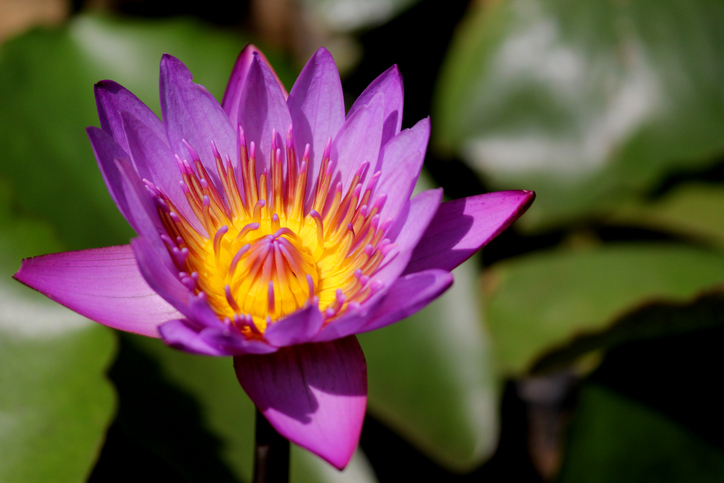
Source: soma sekhar / Getty
Nature has long been considered a point of contact between the human and spiritual worlds. The vastness, variety, beauty, and power of all things organic is a direct display of the infinite creativity and sovereignty of God.
We can learn a lot from nature – and plants in particular. Take a lesson on trusting the timing of your life from Bamboo, for example. The Chinese plant takes three to five years to fully sprout and is one of the strongest plants in the world. Bamboo grows only one foot a year until it reaches maturity and then, incredibly, increases in height up to 3 feet a day thereafter. Or remembering to celebrate tenacity, endurance, and uniqueness like that of a cactus, which can last four to six months without water. The Cherry Blossom Tree can school you, too. Beautifully showing us how to let go, it doesn’t mourn the moment its leaves fall. It knows time to rest and reset is necessary and next year’s bloom will be more beautiful than the last.
Sacred Plants From Around The World
In many cultures and religions around the world, plants are seen as sacred and spiritually symbolic. Here are five sacred plants from around the world:
Israeli Palm – In Mark 11 of the Bible, Jesus rode into Jerusalem and His followers spread palms singing His praises and foreshadowing His valiant return. In Christianity, palms and palm trees represent victory, resilience, peace. Palms have no branches, and they grow straight towards the sun, aka towards God, in a display of “righteousness.”
Indian Lotus Flower – The lotus flower represents life, fertility and purity for Hindus and Buddhists alike. The delicate and beautiful flower ironically blooms spotless out of the mud and murk from which it grows. Those who practice Hinduism believe their god’s glance and touch are as soft as lotus buds, and the spirit of the lotus is within his person.
Grecian Basil – Within the regional denominations of Orthodox Christianity, basil is a sacred herb. Orthodox Christians believe the herb sprung up where Jesus’ blood fell near his tomb, hence why basil has been associated with the worship of the cross, particularly during Great Lent. Priests use basil to establish and purify the holy water and a bunch of its leaves to sprinkle the water on to the congregation. Once gifted by the Priest, many Orthodox Christians will place their bunch in water until it develops roots, so they can replant the basil as a blessing in their own home.
European Yew Tree – Hailing from Europe, the yew tree was traditionally considered sacred by the Druids in pre-Christian times. In a miraculous display of resurrection power, its long drooping branches can take root and form new trunks. A yew tree can also grow a new trunk within the hollow husk of an old tree. It’s no wonder the evergreen plant has long been associated with rebirth and everlasting life.
North American Cedar – Native Americans historically have praised the power of plants – cedar included. Traditionally they used cedar to purify the environment and/or aid in intercession from the spiritual realm. When burned, a sweet aromatic scent is produced which also has restorative medicinal use. Cedars symbolize strength, fortitude, longevity.












